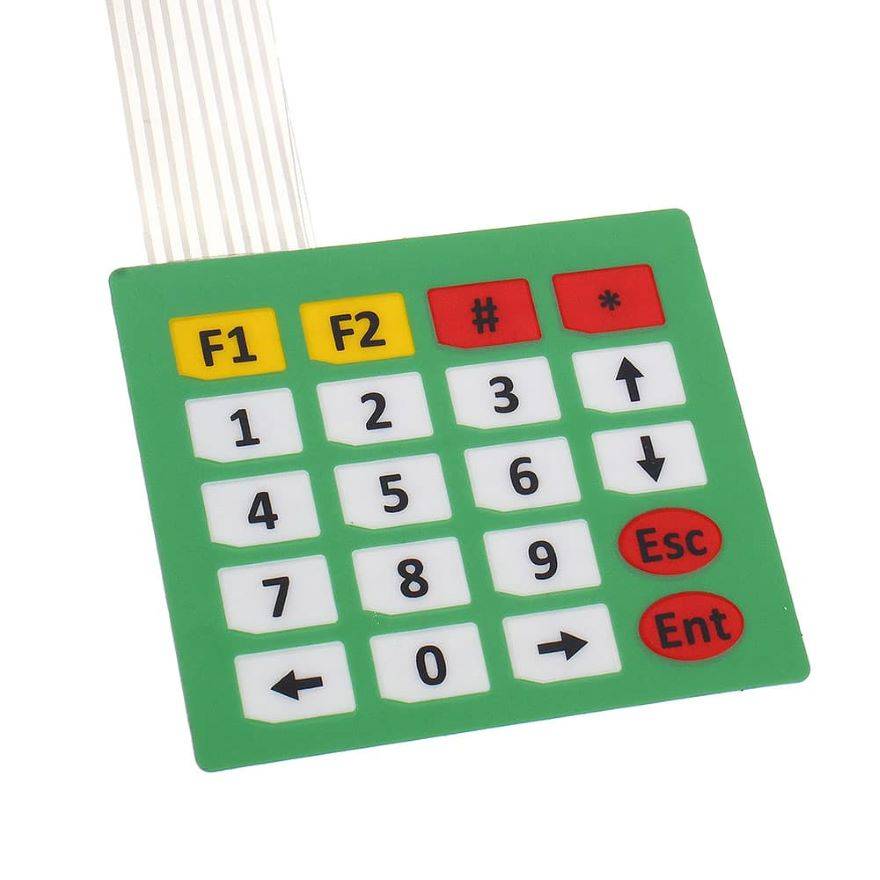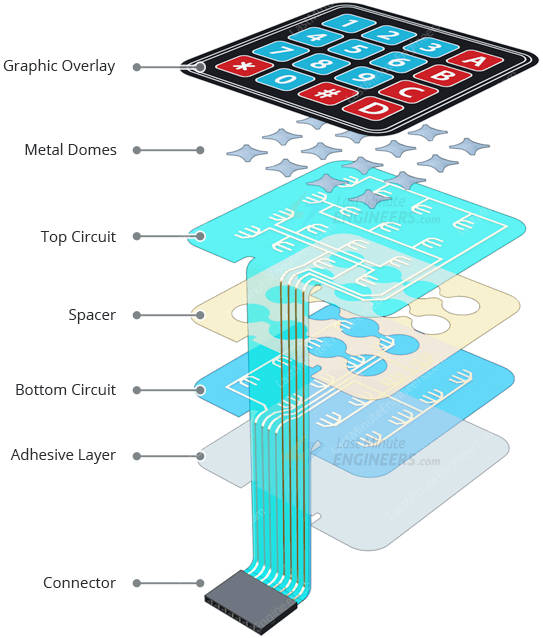
5 x 4 Key Matrix Keypad With Adhesive
Check my rate
| Main centres: | 1-3 business days |
| Regional areas: | 3-4 business days |
| Remote areas: | 3-5 business days |

| Main centres: | 1-3 business days |
| Regional areas: | 3-4 business days |
| Remote areas: | 3-5 business days |
Membrane keypads are an excellent starting point for adding key input to a project because they are inexpensive, long-lasting, and resistant to water. And knowing how to interface them with an Arduino is extremely useful for building a variety of projects that require user input for menu selection, password entry, or robot operation.

Graphic Overlay — Graphic overlays are typically made of polyester because it has better flex life than polycarbonate.
Metal Domes — This layer houses metal domes or polydomes that provide tactile feedback.
Top Circuit Layer — This is typically a polyester printed layer with silver-filled electrically conductive inks. This layer terminates as a flexible tail that connects to the outside world.
Spacer — This layer separates the top and bottom circuits, allowing the switch to remain normally open until the keypad is pressed.
Bottom Circuit Layer — This is typically a polyester printed layer with silver-filled electrically conductive inks. This layer also terminates as a flexible tail.
Rear Adhesive Layer — This layer sticks the keypad to almost anything, which is convenient.
Matrix Membrane Keypad Specs: